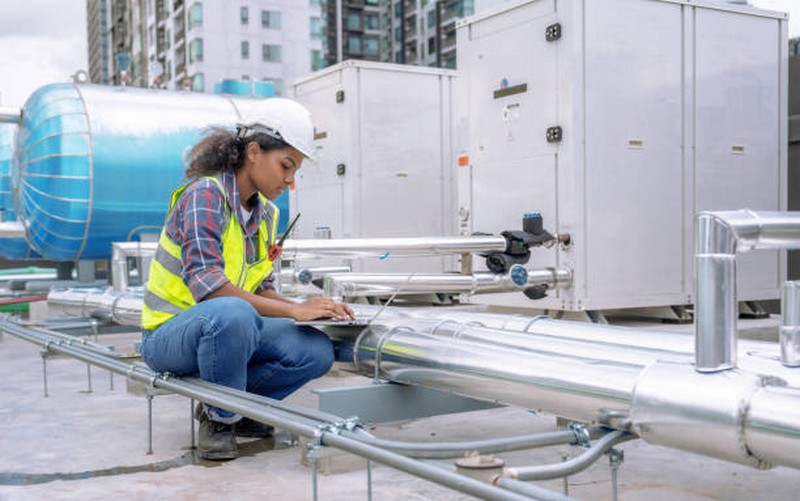Choosing the right cold room is crucial for sectors that deal with items that can spoil quickly. Cool rooms have a significant impact on operational efficiency, energy consumption, and, in the end, a company’s bottom line when designed and sized correctly. Make sure your investment supports your operating requirements and growth aspirations by following our complete guide to picking the proper cool room size and setup.
Assessing Your Needs
The first step in selecting the right cool room is a thorough assessment of your needs. Consider the type of products you intend to store, the volume of goods, and the turnover rate. Different products have varying temperature and humidity requirements; for instance, fresh produce may require different conditions than dairy products or pharmaceuticals. Understanding these specifics is crucial in determining the appropriate cool room configuration and size.
Volume and Space Considerations
Estimating the volume of goods you plan to store is critical. A cool room that’s too small can lead to overcrowding, compromised airflow, and uneven cooling, affecting product quality. Conversely, a cool room that’s too large can result in wasted space and higher operational costs due to unnecessary energy consumption. It’s essential to project future growth and consider seasonal fluctuations in your storage needs to ensure your cool room can accommodate peak periods without straining capacity.
Configurations to Suit Your Operations
Cool room configurations vary widely, each designed to meet specific operational needs:
- Standard Cool Rooms: Ideal for businesses requiring refrigerated storage at a consistent temperature. These are versatile and can be customized to various sizes.
- Freezer Rooms: Necessary for businesses that need to store products at freezing temperatures. They are designed with robust insulation and cooling systems to maintain much lower temperatures.
- Modular Cool Rooms: These offer flexibility in size and location, as they can be easily assembled, disassembled, and reconfigured. They’re perfect for businesses with evolving needs or limited space.
- Combination Cool Rooms: These provide separate sections for refrigeration and freezing, offering a versatile solution for businesses that require multiple storage conditions within the same footprint.
- Custom Cool Rooms: Tailored to specific requirements, custom configurations can include variable temperature zones, built-in shelving, and specific humidity controls, among other features.
Efficiency and Sustainability
Energy efficiency is a critical factor in choosing a cool room. Modern cool rooms are equipped with energy-saving features such as high-efficiency cooling systems, LED lighting, and advanced insulation materials. Selecting a cool room with these features can significantly reduce energy consumption and operational costs. Moreover, consider the sustainability of the materials and the refrigerants used, opting for eco-friendly options whenever possible.
Scalability and Flexibility
The ideal cool room should not only meet your current needs but also accommodate future growth. Opt for a design that allows for expansion, either by adding modular units or by ensuring the infrastructure can support additional cooling capacity. Flexibility in configuration can also help adapt to changing business models, product lines, or storage requirements.
Location and Installation Constraints
The physical location of your cool room can impact its size and configuration. Consider the available space, access routes, and proximity to related operations. For instance, a cool room for a restaurant kitchen should be easily accessible to staff, while one used for pharmaceutical storage may require additional security measures. Also, take into account any installation constraints, such as ceiling height, floor load capacity, and access for maintenance.
Technology and Automation
Advancements in technology have introduced a range of features that can enhance the functionality and efficiency of cool rooms. Automated temperature and humidity controls ensure optimal conditions are maintained consistently, reducing the risk of spoilage. Remote monitoring capabilities allow for real-time tracking of conditions within the cool room, providing peace of mind and facilitating prompt responses to any issues that arise.
Working with Professionals
Selecting the right cool room is a complex process that benefits from professional guidance. Consulting with specialists in cool room design and installation can provide valuable insights into the latest technologies, energy efficiency strategies, and industry best practices. These professionals can help tailor a solution that meets your specific needs, budget, and operational requirements, ensuring a successful investment.
Consider your unique storage demands, the amount of goods, energy efficiency, and possibility for future expansion when making the crucial decision regarding the appropriate size and layout of the cool room. Choose a cool room that helps you achieve your goals by carefully considering your needs and investigating all of the possible options. This will ensure that your operations run smoothly, your products stay high in quality, and your company stays on track. Keep in mind that purchasing an appropriate cool room is crucial to the success of your business because it does more than simply keep perishable goods.

